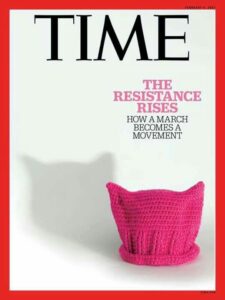The Role of the Pink Aesthetic in Political and Social Movements, Symbolizing Protest and Empowerment
In recent years, the color pink has transcended its traditional associations with femininity, softness, and sweetness to emerge as a powerful symbol of protest, resistance, and empowerment. This transformation has been particularly visible in political and social movements around the globe, where pink has been adopted to challenge societal norms, fight for equality, and make bold statements against oppression. This article delves into the role of the pink aesthetic in these movements, exploring its significance, evolution, and impact.
Historical Context and Evolution
Historically, pink was considered a color suitable for both boys and girls, but it gradually became gendered as feminine in Western societies during the 20th century. This gendering of pink has been both embraced and contested over the years, with the latter gaining significant momentum in recent decades. Activists and movements have started to reclaim pink, transforming it from a symbol of traditional femininity into a tool of empowerment and rebellion.



Pink in Political and Social Movements
One of the most iconic uses of pink in social activism is the pink triangle, originally used by Nazis in concentration camps to identify homosexual prisoners. Reclaimed in the 1970s by gay rights activists, the pink triangle has since become a symbol of the LGBTQ+ movement’s fight against discrimination and for equality.
The Pussyhat Project, launched in response to the 2016 U.S. presidential election, saw millions of women and allies donning hand-knitted pink hats during the Women’s Marches. The bright pink hats served not only as a visual statement of solidarity but also as a clever means of reclaiming derogatory language and imagery.



In countries like Italy and Poland, pink has been used in protests against oppressive governments and policies, especially those infringing on women’s rights and freedoms. The use of pink in these contexts is both a nod to its gendered connotations and a defiant statement that these connotations can symbolize strength, unity, and resistance.
Psychological and Cultural Implications
The adoption of pink in protest movements carries deep psychological and cultural implications. Psychologically, pink is often associated with compassion, nurturing, and love—qualities that movements wish to emphasize as foundational to their causes. Culturally, the reappropriation of pink challenges traditional gender norms and stereotypes, pushing the boundaries of societal expectations and advocating for a more inclusive understanding of gender and identity.
Impact and Reception
The impact of the pink aesthetic in political and social movements is multifaceted. Visually, it creates a striking and memorable image that captures public and media attention. Symbolically, it represents a radical challenge to the status quo, embodying the movements’ demands for change and justice. The reception of the pink aesthetic has been largely positive within progressive circles, viewed as an empowering and unifying strategy. However, it has also sparked debate and criticism, highlighting the ongoing struggle over the meanings and ownership of symbols in public discourse.

Conclusion
The pink aesthetic’s role in political and social movements is a testament to the power of color as a tool of communication and change. By redefining pink as a symbol of protest and empowerment, activists around the world are challenging entrenched societal norms and fighting for a more equitable and just future. As movements evolve, so too will the symbols they adopt, but the pink rebellion stands as a vibrant example of how aesthetics can be harnessed for political and social transformation.
The Ultimate Guide to Black and White Decor
The Beauty of Beach Aesthetic Art: A Guide to Beach Art Styles
The Beauty of Minimalist Sage Green Design
The Baddie Aesthetic Lifestyle: What It Means and How to Embrace It

